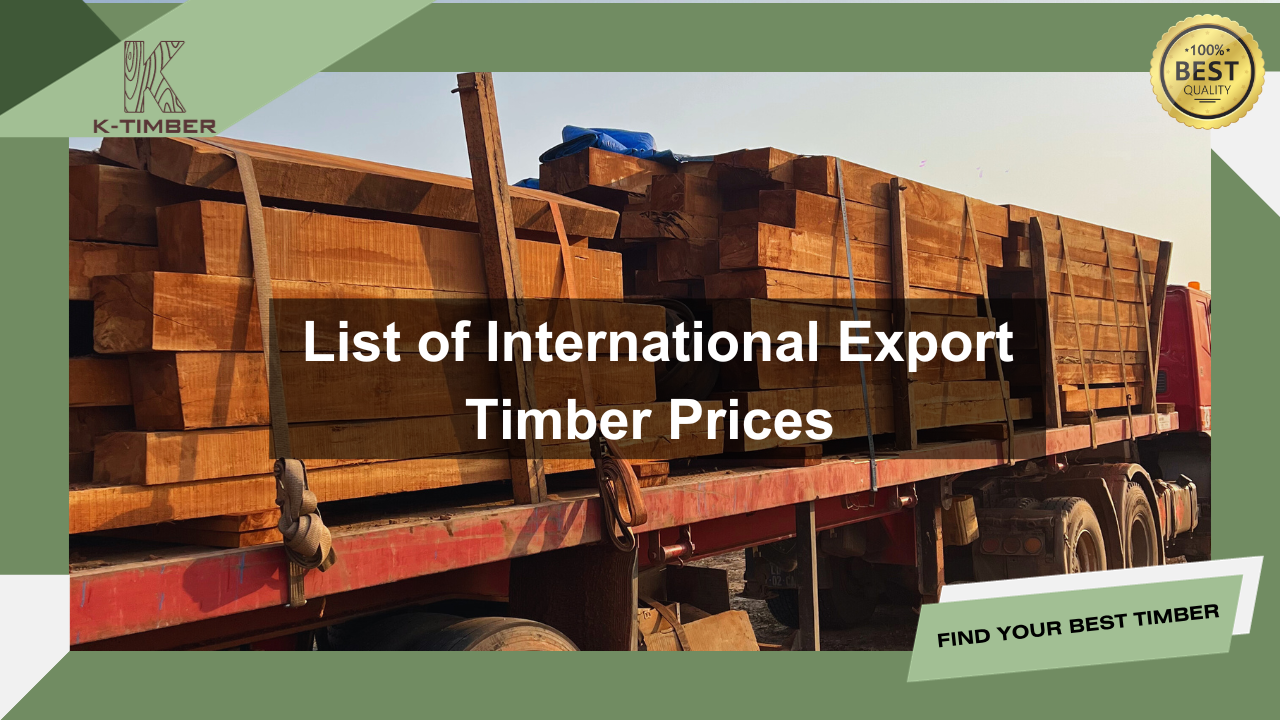In the context of today’s increasingly complex global market, importing wood is not simply a matter of buying and selling. For businesses new to the African wood import and export industry, ensuring a stable supply of high-quality wood is not only the key to success or failure, but also an important step towards sustainable development.
While most large companies often choose to import in large quantities to optimize costs, importing wood in just one container opens up a new and promising direction for new businesses. This helps them minimize financial risks while also creating favorable conditions for testing the market, evaluating wood quality, and balancing their finances from the very beginning.
So, Import Wood from Just 1 Container. Why Not?
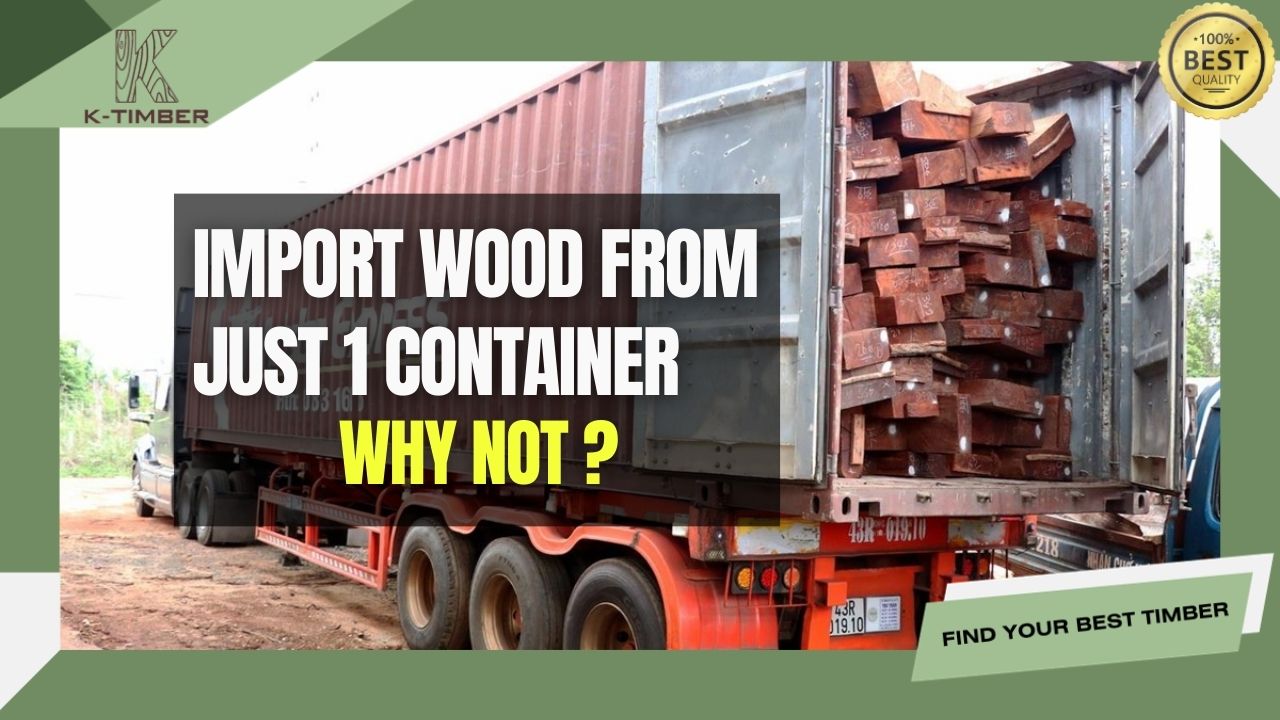
Table of Contents
At K-TIMBER, we support customers to import from just 1 container
K-TIMBER is one of the leading suppliers of African hardwood with over 20 years of experience in the industry. We are not only known for our high-quality and stable wood supply, but also highly appreciated by international customers for our flexibility and dedicated customer support.
We understand that every business, regardless of size, has different needs and financial capabilities. For new businesses, investing a large amount of money in importing wood without knowing the quality can lead to unnecessary financial risks. For this reason, K-TIMBER, in cooperation with HATC, has decided to support customers to import from just 1 container. This opens up an opportunity for cooperation so that customers can test the wood quality before making a larger investment decision.

Benefits when importing wood from 1 container at K-TIMBER
Importing wood from just 1 container at K-TIMBER is not only a smart business decision but also a flexible strategy that helps new and small businesses face market challenges without having to take on too much financial risk.
Firstly and importantly, importing wood from 1 container gives businesses better control over their capital and cash flow, limiting unnecessary risks. This comes not only from the need for a lower initial investment but also helps businesses avoid long-term financial commitments to a product that has not been tested in the market.
Secondly, importing from 1 container provides a golden opportunity for businesses to test and evaluate wood quality before deciding to scale up their orders, ensuring they can refine their products to meet market requirements. Finally, importing wood from 1 container also allows businesses to be flexible in changing suppliers or wood types, thereby enhancing the diversity and quality of the final product.
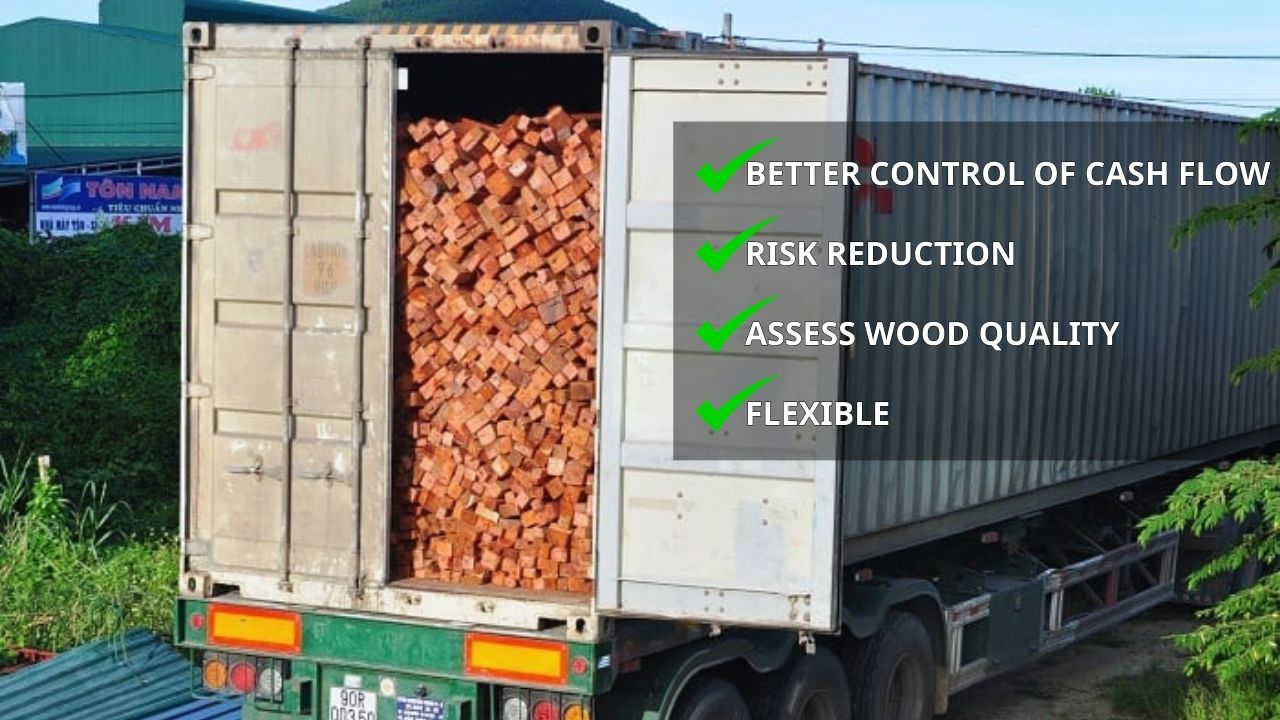
African Wood Import Process at K-TIMBER
The wood import process at K-TIMBER also includes all the import procedures such as HS code, import tax, VAT, import policy and regulations for importing natural wood. Specifically:
Procedures for importing African natural wood
Natural wood is not on the list of goods prohibited or restricted from import. However, importing wood from Angola to other countries in the world still faces some difficulties.
To carry out customs procedures for wood import, businesses need to refer to the List of wild animals and plants managed by the CITES Convention. In addition, businesses also need to check the scientific names of the types of wood they plan to import to determine if they are listed in the Appendix of the CITES Convention.
At K-TIMBER, we strictly follow the standards of the Convention on International Trade in Endangered Species of Wild Flora and Fauna (CITES), the Forest Stewardship Council™ (FSC™), the International Finance Corporation Performance Standards (IFC-PS) and the International Labour Organization (ILO) to help customers feel completely assured about the origin of the wood and the sustainability of the product.

Phytosanitary Inspection Procedures for Natural Wood
After completing the purchase and sale procedures, K-TIMBER proceeds to prepare the phytosanitary inspection dossier. This process includes sampling the wood to check for signs of pests or other plant hazards that could affect the local environment.
The phytosanitary dossier includes:
- Application form on the system
- Attached phytosanitary certificate
- Quarantine permit if any
- Bill of lading
- Contract
- Invoice
- Packing list
Wood import policy is quite complicated, requiring importers to have knowledge of foreign trade and customs law.
Documents for Customs Clearance of Natural Wood Products
Here are the required documents for customs clearance of natural wood products:
Invoice and Packing List:
- Original: A signed and stamped copy with signatures and titles (if any).
- Copy of original: Unstamped copy, but keeping the information from the original.
Bill of Lading (B/L):
- Original Bill: The original B/L.
- Telex Bill: A copy of the B/L sent via telex.
- Surrender Bill: A copy of the B/L when the shipper has accepted the return of the B/L.
Sea Freight Invoice and CIC (Freight Certificate):
- In case of FOB (Free On Board) price: Sea freight invoice and CIC invoice.
Port of Departure Surcharge Invoice:
- In case of EXW (Ex Works) price: Port of departure surcharge invoice.
Phytosanitary Inspection Result:
- Original copy of the phytosanitary inspection result.
Process of importing natural wood
The process of importing natural wood often has to follow many steps to ensure legal regulations on the environment, wild flora and fauna management and international trade.
- Check the species catalog
- Carry out customs procedures
- Check CITIES
- Apply for a CITIES license (if necessary)
- Certificate of origin
- Quarantine certificate – Phytosanitary
- Commercial Invoices and Other Documents
- Payment of taxes and fees
- Shipping and import
- Environmental protection check
- Check quality
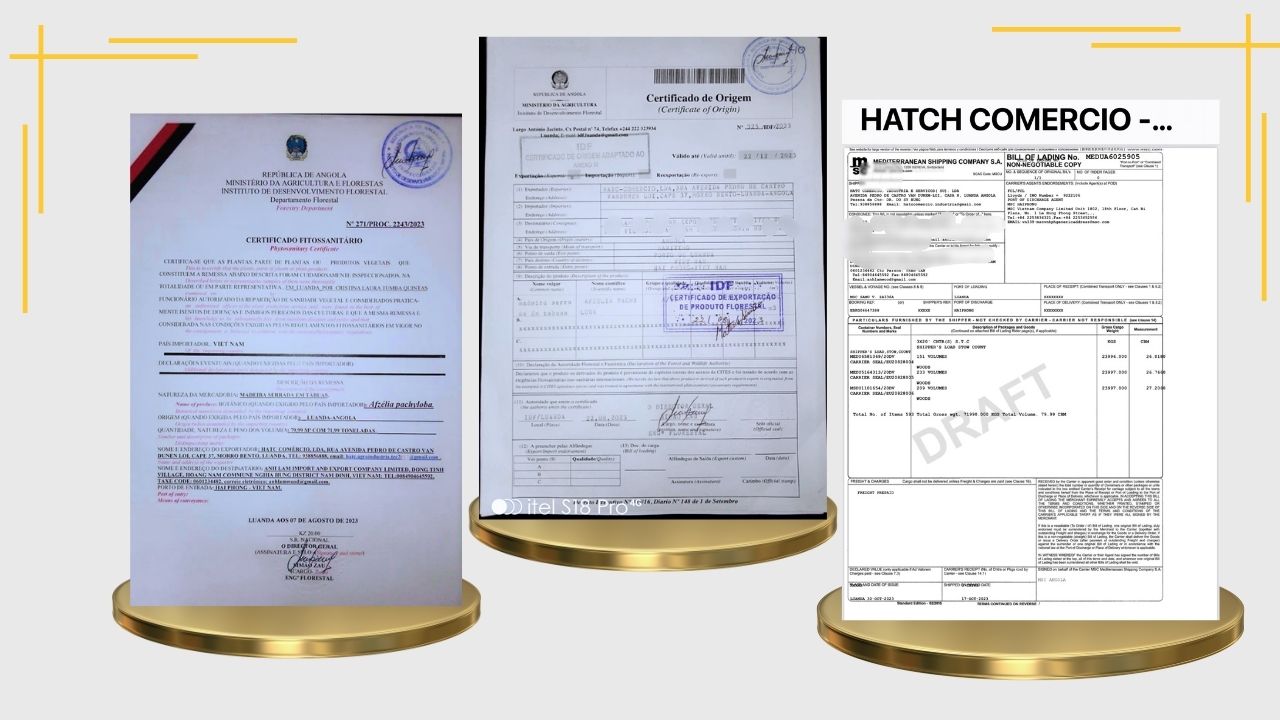
Important Notes When Importing Wood in a Single Container
Here are some important notes that businesses need to pay special attention to when importing wood in a single container:
- Choose a Reputable Supplier: Selecting a reputable supplier is the most crucial factor in ensuring the quality of the wood and the safety of the import process.
- Carefully Check Documents: It is necessary to carefully check all documents related to the wood shipment, such as the purchase contract, bill of lading, certificate of origin, phytosanitary certificate, etc.
- Comply with Legal Regulations: It is necessary to comply with legal regulations related to wood import, including regulations on taxes, customs, quarantine, etc.
- Prepare All Necessary Documents: It is necessary to prepare all necessary documents for customs clearance of the wood shipment.
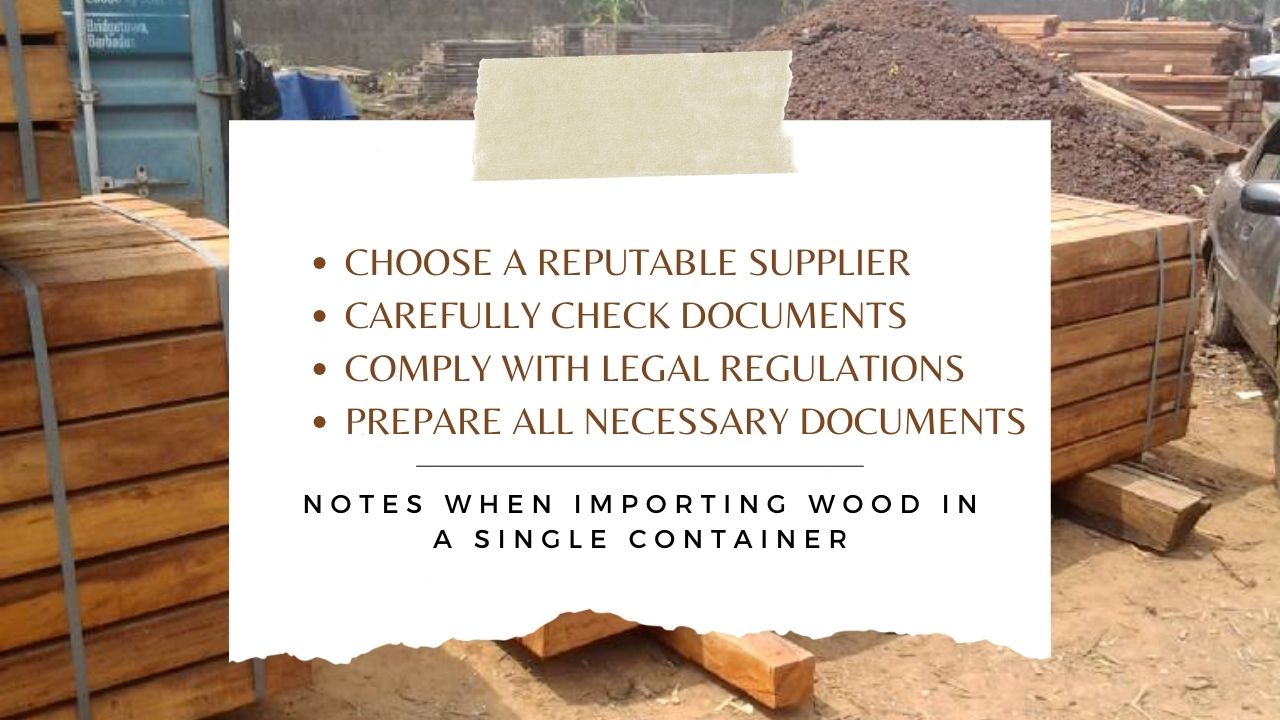
Who Imports Wood in a Single Container?
Importing wood in a single container is generally suitable for certain types of clients, such as:
- Small and Medium Enterprises (SMEs): SMEs often have limited capital and want to tightly control financial risks. Importing from a single container allows them to test the wood quality and assess market demand before committing to a larger quantity.
- Custom Furniture Manufacturers and Carpenters: For those working on custom projects or handcrafted products, being able to import wood in small quantities allows them to maintain flexibility in choosing the right type of wood for each specific project without having to stock large amounts of raw materials.
- Startups: These businesses typically look for ways to control costs and risks in the early stages. Importing wood from a single container allows them to explore the market and learn about the advantages and disadvantages of different types of wood before scaling up.
Restrictions when importing wood from a container
However, importing wood from just one container is not always without restrictions. One of the main drawbacks is higher shipping costs per unit of product, due to the inability to take advantage of purchasing in bulk. Furthermore, small scale can also limit the supplier’s ability to negotiate the best price and can lead to longer waiting times for products, because larger orders often get priority processing physical. In addition, finding reputable suppliers willing to trade in small quantities is also quite difficult.
Finding a Reputable and Quality African Wood Supplier
Finding a reputable and quality African wood supplier requires thorough research and information gathering from multiple sources. Here are some specific steps:
- Clearly determine the need for the type of wood your business is looking for, including size, quality and quantity
- Research and learn about African wood suppliers through their websites, industry forums or customer reviews.
- Evaluate the company history, Check if the supplier has sustainable forest management certification (CITIES, FSC, PEFC).
- Contact suppliers directly to discuss needs and request product samples. Evaluate the quality of product samples and compare between suppliers to find the best choice.
- Agreement on price, payment terms, delivery time and other terms.
- Order a small amount of goods before making a large commitment to test the delivery process and product quality.
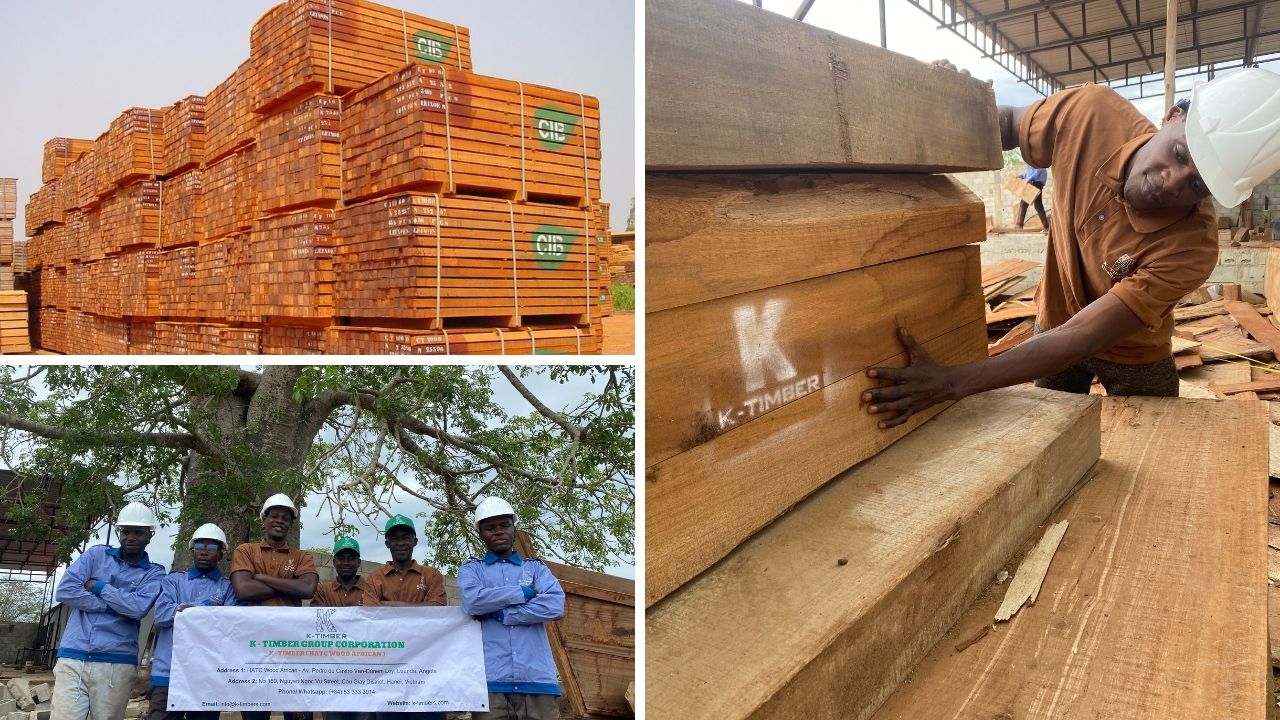
If you don’t know any reputable and quality African hardwood suppliers, you can refer to our article below
READ MORE: Top 5 African Wood Suppliers in the World
As you can see, importing wood in a single container is a viable option for many businesses, especially small and medium enterprises, startups, and independent carpenters or custom furniture manufacturers. Importing in small quantities like this not only helps to minimize financial risks but also creates the opportunity to test product quality and build long-term partnerships for each business.




